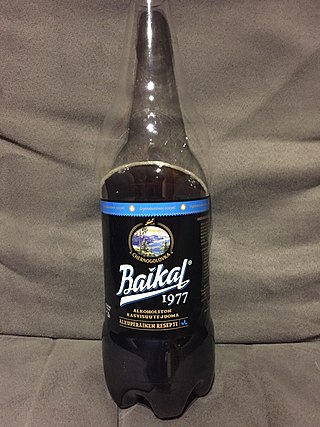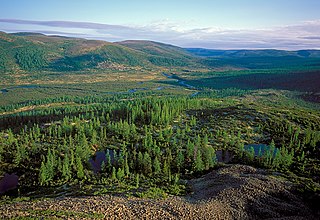Baykal , or Lake Baikal, is a lake in southern Siberia, Russia.
Contents
- Places
- Science, technology and engineering
- People with the given name
- People with the surname
- Other uses
- See also
Baykal or Baikal may also refer to:
Baykal , or Lake Baikal, is a lake in southern Siberia, Russia.
Baykal or Baikal may also refer to:
The Volga is a river of Russia.

The Buran programme, also known as the "VKK Space Orbiter programme", was a Soviet and later Russian reusable spacecraft project that began in 1974 at the Central Aerohydrodynamic Institute in Moscow and was formally suspended in 1993. In addition to being the designation for the whole Soviet/Russian reusable spacecraft project, Buran was also the name given to orbiter 1K, which completed one uncrewed spaceflight in 1988 and was the only Soviet reusable spacecraft to be launched into space. The Buran-class orbiters used the expendable Energia rocket as a launch vehicle.

Lake Baikal is a rift lake in Russia. It is situated in southern Siberia, between the federal subjects of Irkutsk Oblast to the northwest and the Republic of Buryatia to the southeast. At 31,722 km2 (12,248 sq mi)—slightly larger than Belgium—Lake Baikal is the world's seventh-largest lake by surface area. However, because it is also the deepest lake, with a maximum depth of 1,642 metres, Lake Baikal is the world's largest freshwater lake by volume, containing 23,615.39 km3 (5,670 cu mi) of water or 22–23% of the world's fresh surface water, more than all of the North American Great Lakes combined. It is also the world's oldest lake at 25–30 million years, and among the clearest.

Ulan-Ude is the capital city of Buryatia, Russia, located about 100 kilometers (62 mi) southeast of Lake Baikal on the Uda River at its confluence with the Selenga. According to the 2021 Census, 437,565 people lived in Ulan-Ude; up from 404,426 recorded in the 2010 Census, making the city the third-largest in the Russian Far East by population.

The Selenga or Selenge is a major river in Mongolia and Buryatia, Russia. Originating from its headwater tributaries, the Ider and the Delger mörön, it flows for 992–1,024 kilometres (616–636 mi) before draining into Lake Baikal. The Selenga therefore makes up the most distant headwaters of the Yenisey-Angara river system.

Buryatia, officially the Republic of Buryatia, is a republic of Russia located in the Russian Far East. Formerly part of the Siberian Federal District, it has been administered as part of the Far Eastern Federal District since 2018. It borders Irkutsk Oblast and Lake Baikal, the deepest lake in the world to the north, Zabaykalsky Krai to the east, Tuva to the west and Mongolia to the south. Its capital is the city of Ulan-Ude. It has an area of 351,300 square kilometers (135,600 sq mi) with a population of 978,588. It is home to the indigenous Buryats.

Transbaikal, Trans-Baikal, Transbaikalia, or Dauria is a mountainous region to the east of or "beyond" (trans-) Lake Baikal in Far Eastern Russia.

Barguzinsky Nature Reserve is the oldest of zapovedniks, established in 1916 for the protection of the Barguzin sable. It is located in Buryatia (Russia) on the west slope of the Barguzinsky Range, including the northeast shores of the Lake Baikal and a part of the lake itself. The area of the reserve is 2,482 km2 (958 sq mi), covering several types of boreal ecosystems, from bogs and taiga coniferous forests to subalpine meadows and mountain tundras. The landscape is postglacial, featuring rugged highlands, long river valleys and outwash, alluvial and lacustrine plains.
Ara may refer to:
The Angara is a major river in south-east Siberia, Russia, connecting Lake Baikal to the Yenisey river and thence the Arctic Ocean.
Turka may refer to:
Karasu, Kara-su, Kara su, Qarasu or Gharasu may refer to:

Baikal is a Soviet, non-alcoholic beverage of dark-brown colour. The beverage's basis is water, but it also contains extracts of natural herbs, sugar, citric acid, and carbon dioxide. The natural herbs and extracts utilized typically include black tea extract, Siberian ginseng, cardamom oil, eucalyptus oil, lemon oil, liquorice, St. John's wort and laurel.
Svyatoy Nos is the name of several localities in Russia:

Baikal International Airport, formerly Ulan-Ude Airport is an international airport located 12 kilometres (7.5 mi) west of Ulan-Ude, Russia. The airport has two terminals with customs and border control facilities with a capacity of 400 passengers per hour. In 2021, the airport served 540,094 passengers on more than 20 scheduled international and domestic destinations. The airport is named after the nearby Lake Baikal.

The Tunka or Tunkinsky National Park is a national park located in south central Siberia. It covers a mountainous region centered on the Irkut River valley that continues from the rift valley of Lake Baikal southwest to the border of Mongolia. To the north and west of the valley is the eastern edge of the Sayan Mountains. To the east are the lower Khamar-Daban mountains. About 1,183,662 hectares in size, the park occupies the entirety of the Tunkinsky District of the Republic of Buryatia.
Kiran or Kıran may refer to:

Baikal-Lena Nature Reserve is a Russian 'zapovednik' located on the northwest coast of Lake Baikal in southern Siberia. It protects both lake shore and the source of the Lena River. The reserve stretches along the western coast of Lake Baikal for about 120 km, with an average width of 65 km. The reserve is situated in the Kachugsky District of Irkutsk Oblast. As of December 1996, the Baikal-Lena Reserve is included in the list of sites of World Cultural and Natural Heritage, and a World Heritage Site with Pribaikalsky National Park. The Baikal-Lena Reserve is managed jointly with Pribaikalsky National Park, which is immediately to the south, thus protecting a continuous 580 km of shoreline on Lake Baikal.

Dzherginsky Nature Reserve is a Russian 'zapovednik', located about 100 km east of the northern section of Lake Baikal. It covers the source and upper reaches of the Barguzin River, the second largest tributary to Lake Baikal, and is at the junction of three mountain ranges - the Barguzin Range to the west of the reserve, the Ikat Range and the Southern Muya Range. The reserve's mountainous territory is dominated by larch forests. It is situated in the Kurumkansky District of Buryatia. The nearest city, Ulan-Ude, is 560 km to the south. The reserve was formally established in 1992 to protect the biodiversity of the upper Barguzin valley, and to study natural processes of the area. It covers an area of 238,088 hectares (919.26 sq mi).

The Chivyrkuisky Isthmus is a broad land bridge that connects the island-like mountainous part of the Svyatoy Nos peninsula to the eastern shore of Lake Baikal. The isthmus and the "island" are part of the Zabaykalsky (Trans-Baikal) National Park of the Republic of Buryatia.